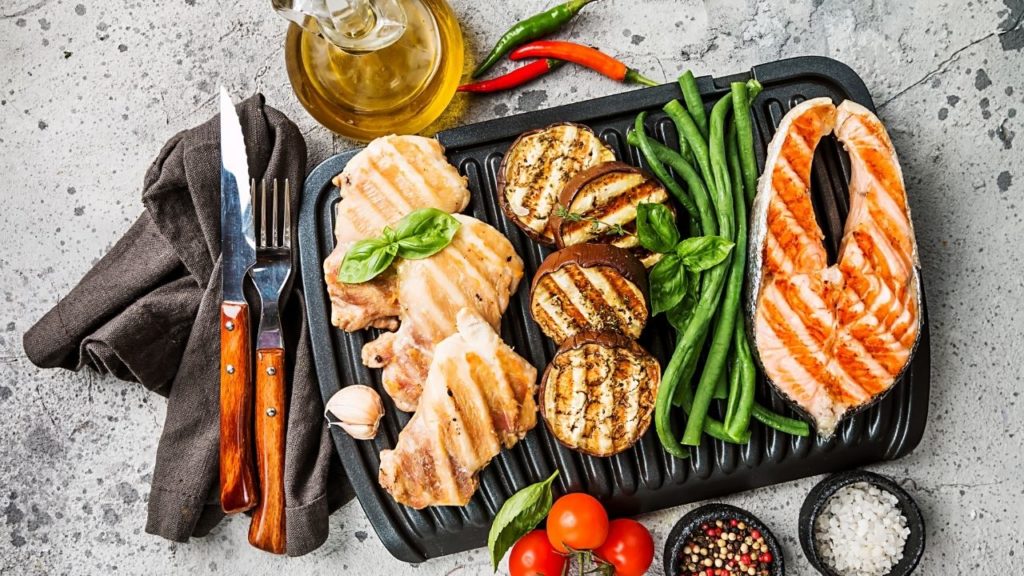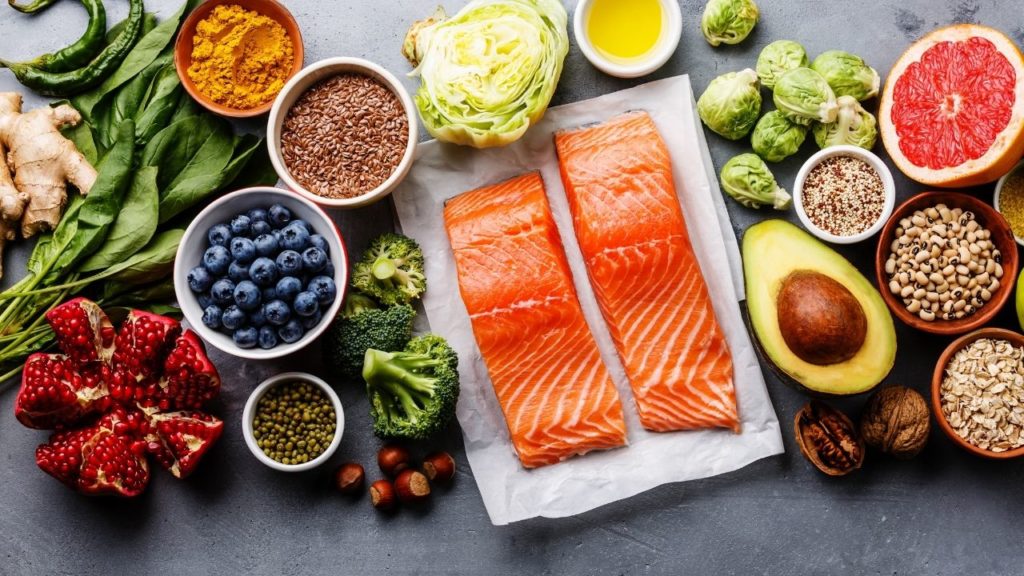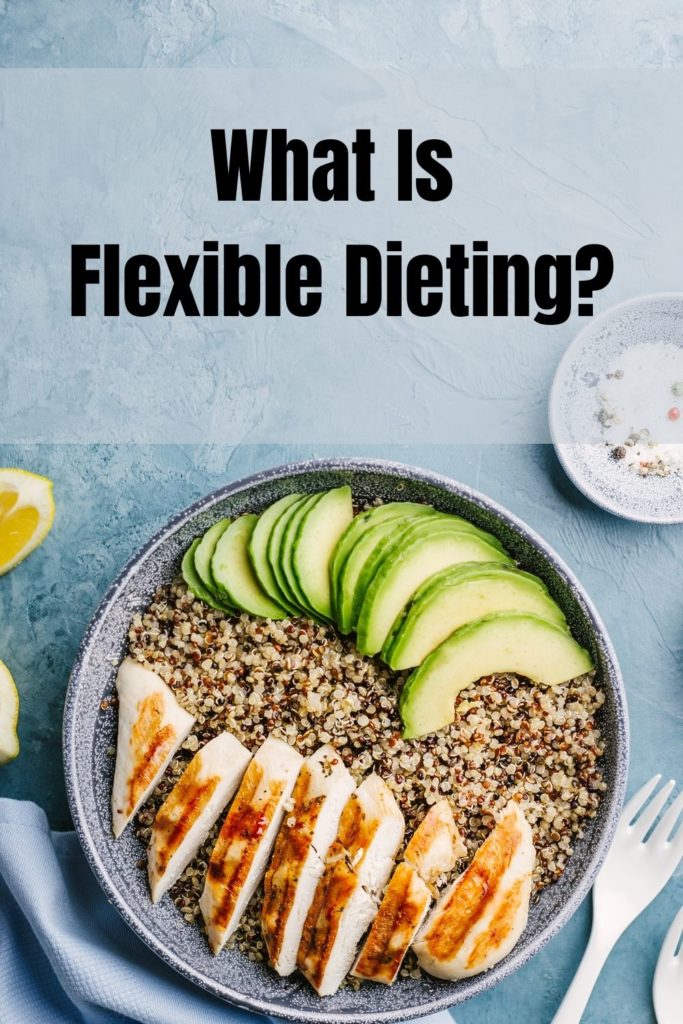Last Updated on February 27, 2022 by TheMealPrepNinja
What Is Flexible Dieting? How to Make Flexible Dieting Work for You
If you’re like most people, you’ve probably heard of flexible dieting but don’t really know what it is. In this blog post, we will discuss what flexible dieting is and how to make it work for you!
Flexible dieting has become increasingly popular in recent years as more and more people have become interested in eating healthy without having to restrict themselves. This approach to dieting allows you to eat whatever you want, within reason, and still lose weight or maintain your current weight.
It can be a great way to stay on track with your nutrition goals without feeling restricted or deprived. So, let’s take a closer look at what flexible dieting is and how you can make it work for you!
A sustainable flexible diet
A sustainable flexible diet is one that you can stick to for the long haul. It’s important to find a way of eating that works for you, and that doesn’t feel like a burden. Here are a few tips for making flexible dieting work for you:
1. Don’t deprive yourself. If you’re constantly feeling hungry and deprived, you’re going to find it hard to stick to your diet. Find a way of eating that allows you to have occasional treats without overindulging.
2. Don’t get too obsessive about tracking your food. Tracking your food can be helpful, but don’t get so obsessed with it that you start to lose sight of the bigger picture.
3. Be patient. It takes time to find the right balance of foods that work for you. Don’t get discouraged if it takes a few tries to find what works.
Flexible dieting can be a great way to eat healthy without feeling like you’re on a diet. By finding a way of eating that works for you, and being patient as you find the right balance of foods, you can make flexible dieting work for you.
Is flexible diet good for weight loss?
There is no definitive answer, as flexible dieting can be effective for weight loss for some people and not so much for others. The key to making this dieting work for you is to find a plan that fits your lifestyle and preferences and to be consistent with it.
If you can stick to your flexible dieting plan most of the time, you should see results. For it to work, you will have to be in a calorie deficit. The key is to eat high-volume foods.
Can you follow a flexible diet without tracking your intake?
While tracking your intake is not necessary to follow this diet, it can be helpful in ensuring that you are meeting your nutrient and calorie needs. If you are not comfortable tracking your intake, consider working with a registered dietitian or another qualified health professional who can help you create a meal plan that best meets your needs.
Flexible dieting gives you the ability to eat the foods you love while still meeting your nutritional goals. By following a few simple tips, you can make flexible dieting work for you!
Choose nutrient-rich foods: When selecting foods to include in your flexible diet, choose those that are high in nutrients and low in added sugars and unhealthy fats. This will help ensure that you are getting the nutrients your body needs without consuming excess calories.
Avoid restrictive diets: Restrictive diets can be difficult to follow and often lead to feelings of deprivation. A flexible diet allows you to eat a variety of foods, so you are less likely to feel restricted. You can eat from all food groups. Food quality is key.
Four Steps to Flexible Dieting for Weight Loss Success
Flexible dieting, also known as “If It Fits Your Macros” (IIFYM), is a dieting approach that revolves around counting macronutrients instead of calories.
There are four simple steps to follow for successful flexible dieting:
1) Calculate your basal metabolic rate (BMR) and activity level. This will help you determine how many calories you need to eat each day to maintain your current weight.
2) Calculate your macronutrient needs. This will help you determine how many grams of protein, carbs, and fat you need to eat each day.
3) Find healthy, satisfying foods that fit within your daily calorie and macronutrient allotment.
It’s important to find foods that you enjoy eating and that fit within your daily calorie and macronutrient allotment. This will help you stick with your diet plan in the long term.
Finally, be patient and give yourself time to adjust to your new way of eating. It can take some time to get used to counting macronutrients instead of calories, but with a little practice, you’ll be able to do it like a pro!

What flexible dieting is NOT..
Flexible dieting is not a “free for all.” It is not an excuse to eat whatever you want, whenever you want. Flexible dieting is a way of eating that allows for some flexibility but still allows you to lose weight or maintain a healthy body weight.
To make flexible dieting work for you, you need to be reasonable with your food choices. You should still focus on eating mostly healthy foods and allow for some indulgences here and there. If you are too strict with your food choices, you will likely find yourself struggling to stick to your diet.
Think about what types of foods you enjoy, and plan your diet around those foods. This will help make the diet more sustainable for you in the long run.
Flexible dieting is a great option for those who are looking to lose weight or maintain healthy body weight. It can be helpful to talk to a registered dietitian or nutritionist to help you create a flexible dieting plan that works for you.
Creating a Sustainable Way of Eating
You want to eat healthily, but you also don’t want to restrict yourself from all the foods you love.
It can be hard to stick with a healthy diet when you feel like you’re always depriving yourself.
Flexible dieting is the answer. With flexible dieting, you can still enjoy your favorite foods while eating healthy and losing weight. You’ll never have to feel restricted or deprived again.
As long as it fits your macros, you can eat what you want.
Flexible dieting is a sustainable way of eating because it’s not restrictive.
You won’t feel like you’re on a diet, and you won’t have to give up your favorite foods.
Flexible dieting is all about making healthy choices most of the time and counting your macros for long-term weight loss. Eating nutrient dense foods for optimal health.
What is flexible dieting?
Flexible dieting, often called “If It Fits Your Macros” (IIFYM), is a nutrition approach that allows you to eat what you want as long as it falls within your daily calorie and macronutrient goals. It’s a great way to stay on track with your diet while still enjoying your favorite foods.
To make flexible dieting work for you, first, calculate your daily calorie and macronutrient needs. Then, plan out your meals and snacks accordingly, making sure to include plenty of healthy foods as well as your favorite treats. Be mindful of portion sizes, and enjoy!
A flexible dieting approach can work for anyone, whether you’re trying to lose weight, gain muscle, or just maintain your current weight. If you’re looking for a nutrition plan that fits your lifestyle and allows you to enjoy your food, flexible dieting may be the perfect approach for you.
How does a flexible diet work?
Flexible dieting, or “If It Fits Your Macros” (IIFYM), is a dieting approach that focuses on counting macronutrients instead of calories. With IIFYM, you can eat what you want as long as you hit your daily calorie and macronutrient intake goals. This approach can be more flexible than other diets, which may restrict certain food groups.
You can still be in a calorie deficit with flexible dieting, which is necessary for weight loss. To do this, you’ll need to calculate your daily calorie needs and then create a deficit by eating fewer calories than this amount. You can do this by tracking your food intake and making adjustments to hit your goals.
Flexible dieting can be an effective weight-loss tool, but it’s important to make sure you’re following a healthy diet. If you’re not careful, you may end up eating too many unhealthy foods and not getting the nutrients your body needs.
Flexible Dieting vs. Clean Eating
It really depends on what you’re looking for. If you want to be able to enjoy there are a lot of different diets out there these days, but what is the difference between Flexible Dieting and Clean Eating?
With this diet approach, you can eat whatever you want as long as you stay within your calorie and macronutrient goals. This means that you can still enjoy your favorite foods, as long as you account for them in your daily intake.
Clean Eating, on the other hand, is all about eating whole, unprocessed foods, healthy eating. This way of eating restricts most processed foods, which can be difficult to stick to in the long run.
So which diet is right for you? It really depends on what you’re looking for. If you want to be able to enjoy your favorite foods while still losing weight, Flexible Dieting may be the way to go. However, if you’re looking for a more long-term healthy eating plan, Clean Eating may be a better option.
No matter which diet you choose, the most important thing is that you find something that you can stick to in the long run. Flexible Dieting vs. Clean Eating. It is important to consider your overall health and gut health.

Health & Longevity
Flexible dieting has become a popular term in the health and fitness industry. But what does it actually mean? And more importantly, can it work for you?
In a nutshell, flexible dieting is a way of eating that allows for some flexibility in your food choices. You don’t have to rigidly follow a set of specific rules, but you still need to make sure that your overall calorie intake is in line with your goals.
If you’re new to flexible dieting, here are a few tips to help you get started:
1. Start by calculating your daily calorie needs. This will give you a starting point for how many calories you should be eating each day.
2. Decide what your macro goals are. This means deciding how many grams of protein, fat, and carbs you want to eat each day.
If you’re not sure where to start, there are plenty of resources available that can help you figure out your macros. Once you have a general idea of what your goals should be, you can start planning your meals accordingly.
One of the benefits of flexible dieting is that it allows for a certain amount of flexibility in your food choices. This can be helpful if you have any dietary restrictions or allergies. You don’t have to adhere to a strict set of rules, but you do need to make sure that your overall calorie intake stays within your goals.
How can I use flexible diet to achieve my goals?
There are a few things to keep in mind when using flexible dieting to achieve your goals:
1. Be realistic about what you can achieve. Don’t try to cut too many calories or carbs at once; this can backfire and lead to binge eating. Start with small changes and gradually add more as you get used to the diet.
2. Pay attention to your body’s signals. If you’re feeling hungry or tired, that’s your body telling you that you need to adjust your diet. Listen to these signals and make changes
3. Make sure you’re getting enough protein, vitamins, and minerals. A balanced diet is essential for optimal health, so don’t neglect your nutrient intake.
There is a reason the flexible dieting strategy works. You can sometimes eat junk food like ice cream as long as you are counting macros.
IIFYM: If it fits your… Metabolism?
“if it fits your macros” (IIFYM), is a dietary approach that allows you to eat what you want as long as it fits within your daily calorie and macronutrient goals. This can be a great way to maintain flexibility and variety in your diet while still reaching your goals.
To make IIFYM work for you, first, calculate your daily calorie and macronutrient needs. You can find online calculators to help you with this, or you can work with a dietitian to create a custom plan. Once you know what your targets are, aim to evenly distribute your calories and macros throughout the day. This means that no food is off-limits, as long as it fits into your daily plan.
You can also use IIFYM to help you meet specific goals, such as increasing muscle mass or losing weight. By carefully tracking your intake and adjusting your goals as needed, you can make IIFYM work for you and your unique needs. Food quality is important and food intake.
Effective
Flexible dieting is an effective way to manage your food intake and lose weight. Unlike other diets that require you to follow a set of rigid rules, flexible dieting allows you to eat what you want when you want. This makes it a more sustainable way to lose weight and keep your body fat off in the long term and meet your body composition goal.
The pros and cons of flexible diets
Flexible dieting has become a popular way to lose weight and manage your nutrition. It allows you to eat what you want within certain guidelines, which can make it more flexible and realistic than other diets. However, there are some drawbacks to flexible dieting that you should be aware of.
First, flexible dieting can be hard to stick to in the long run. If you’re not careful, you may find yourself cheating on your diet or eating unhealthy foods because they fit within the allowed guidelines. Additionally, flexible dieting can be expensive if you’re not careful about what you buy
PRO: It provides education and awareness around nutrient content
Another pro to flexible dieting is that it provides education and awareness around nutrient content. This can be really helpful in making sure that you’re getting all of the nutrients that you need, and it can also help to prevent you from over-consuming certain nutrients.
CON: Including all foods can still trigger unhealthy habits
There is a downside to flexible dieting, however. Although you are allowed to eat all foods, this can still trigger unhealthy eating habits. You may find that you start to crave unhealthy foods and binge on them. To avoid this, be sure to set limits on how much you eat unhealthy foods. Stick to great food quality and minimally processed foods.

Bottom Line For Flexible Dieting Approach
When it comes to flexible dieting, there is no one-size-fits-all answer. However, there are a few key things to keep in mind if you want to make flexible dieting work for you:
1. Be realistic about your goals. Flexible dieting can be a great way to achieve your weight loss goals, but it’s important to set realistic expectations. Don’t try to go too extreme with your diet or cut out too many foods.
2. Don’t get discouraged if you don’t see results immediately. Remember that healthy weight loss happens gradually over time, so be patient and stick with it.
3. Make sure you’re tracking what you eat. This is essential for successful flexible dieting. Use a food journal or tracking app to make sure you’re staying on track.
If you keep these things in mind, flexible dieting can be a great way to help you reach your weight loss goals. Just remember to be patient and stay focused, and you’ll see the results you’re looking for.
An easy macro-based flexible diet plan
One way to make flexible dieting work for you is to follow a simple macro-based plan. This type of plan is based on your current weight and lifestyle, and it’s tailored to help you lose weight in a healthy way. To create a macros-based flexible diet plan, you’ll need to track your daily calorie intake and your macronutrient goals.
Your calorie intake will vary depending on your weight and activity level, but you’ll want to make sure you’re eating enough to support your goals. For example, if you’re trying to lose weight, you’ll want to eat fewer calories than if you’re trying to maintain your current weight. Similarly, your macronutrient goals will also vary depending on your weight and activity level.
A macros-based flexible diet plan will typically include a higher percentage of protein and healthy fats, and a lower percentage of carbs. This is because protein helps you feel full longer, and healthy fats are essential for weight loss and overall health. You’ll also want to avoid processed foods and sugary drinks, which can sabotage your weight loss goals.
Flexible Dieting for Different Goals
Flexible dieting can be used for different goals, including weight loss, muscle gain, and maintenance. It’s important to customize your flexible dieting plan to fit your specific goals.
For weight loss, you’ll want to create a calorie deficit by eating fewer calories than you burn each day. This can be achieved by reducing the number of calories you eat or by increasing the number of calories you burn through exercise.
For muscle gain, you’ll need to eat more calories than you burn each day. This can be done by increasing the number of calories you eat or by reducing the number of calories you burn through exercise.
For maintenance, you’ll want to eat the same number of calories each day that allows you to maintain your current weight and body composition.
Flexible Dieting to Increase Performance
When you are trying to achieve a performance goal, such as losing weight or building muscle, flexible dieting can be a great way to make sure that you are getting all of the nutrients that you need while still hitting your calorie goals.
There are a few different ways to do flexible dieting for performance goals, but the basic idea is to make sure that you are eating enough protein, carbohydrates, and healthy fats while still hitting your calorie goals. You can also adjust your macronutrient ratios depending on what type of performance goal you are trying to achieve.
Conclusion
Flexible dieting is a way of eating that allows for some flexibility in what you eat, as long as you stay within your calorie and macronutrient goals. This can be a great way to stick to a healthy diet while still enjoying your favorite foods.
There are several ways to make flexible dieting work for you. First, find a calorie and macronutrient goal that works for you. Next, create a meal plan based on these goals, and be sure to include plenty of healthy foods as well as your favorite treats. Finally, stay accountable by tracking your food intake and staying within your calorie budget.
Here is another great blog port Flexible Dieting for Weight Loss.

Jim Lopez, the founder and editor of The Meal Prep Ninja, shares his journey from a passionate bodybuilder and fitness enthusiast to a certified nutrition coach. Certified by Precision Nutrition, Jim aims to empower others with knowledge on meal prep and nutrition, offering resources for busy individuals to enjoy low-calorie, tasty foods. His blog is a community for sharing healthy eating habits and meal prep recipes



